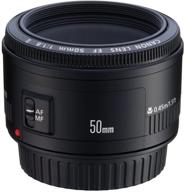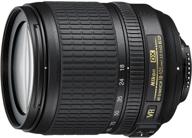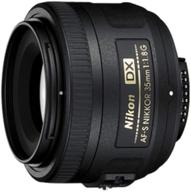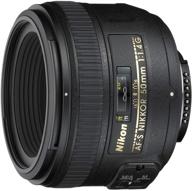
Review on Nikon 20070 NIKKOR 14 30Mm by Julie Terrones

This lens is really good.
Let me start by saying that I didn't plan to like this lens. My main criticism of the announcement of this lens was that it wasn't 11-24mm or 12-24mm. While I wish Nikon would eventually release a wider lens, I've concluded that they struck a great balance with this lens. The lens weighs next to nothing and doesn't take up much room in your bag thanks to its compact design, which gets even smaller when you put the zoom in storage mode (the lens essentially retracts all the way). Regardless, the actual construction feels fairly solid and I can confirm that the weather protection is excellent. The main thing that really sets this lens apart is the ability to use standard 82mm round filters. At the time of writing, this is the only ultra wide zoom on the market that offers both 14mm at the wide angle and the ability to use standard round filters. If you count those things, this is probably the handiest ultra-wide zoom out there. All of this wouldn't mean much without performance, and it's a slightly mixed picture here. In terms of sharpness, the 14-30mm f/4 S appears to be sharper than the 14-24mm f/2.8 G at all apertures, and that makes the 16-35mm f/4 G a complete joke . Coatings do an excellent job of maintaining contrast and suppressing glare. The color reproduction is very accurate (the images for this test were uploaded with the camera neutral profile without color correction). I didn't notice any significant chromatic aberrations either. This brings us to vignette and distortion. You know the saying "You can't eat and eat your cake at the same time”? There will be a compromise with every lens. In general, high-quality, well-corrected optics eliminate the need for a large, heavy lens. While this lens is exceptionally sharp and superior in many optical aspects, the compact lens design offsets the disadvantages of significant optical distortion and vignetting. People using Lightroom probably won't even notice this, as Nikon has worked with Adobe to automatically apply a software correction to the RAW file on import to correct distortion and vignetting (I suspect it's about 2 stops at most) . wide end), but you will definitely notice both if you use other RAW conversion software. So we have a little argument here. If distortion and vignette are automatically corrected when imported into the program, so you don't even notice it, does it matter? In my opinion, yes, it does matter. The reason for this is that any corrections you make programmatically rather than optically will require interpolation of the data on your sensor and this will inevitably result in SOME loss of quality. The same is true for the vignette, where local fixation leads to a reduction in the dynamic range that can be captured in those parts of the image. If you have a Z7 like me, the drop in quality is probably imperceptible for most purposes, but it's there and needs to be acknowledged. However, it is debatable whether optical distortions or even strong vignetting are necessarily a bad thing. I know it sounds pretty silly, but unless you're using this lens to shoot architecture, real estate (like me) or other subjects with very straight lines, you probably won't notice even moderate distortion. or a vignette, since real-world scenes are complex enough to cover up these kinds of imperfections. If you're shooting straight lines you'll either have to live with the software correction or look elsewhere. To me, the size, weight and 82mm filter thread still make this lens much more desirable than a larger, better corrected lens. Admittedly, I'm cheating the system by having a sensor with far more megapixels than I'll likely ever need. Despite these flaws, why am I giving this lens 5 stars? There is a physical reality that you have to deal with with any lens. Because of this, I think a lens should be judged on what it's designed for and the value of the overall package. In this case we have a lens that is extremely sharp, has excellent flare and CA resistance, has excellent color reproduction, is lightweight and compact, and can use standard round filters, reaching 14mm at the wide end. This is an extremely high quality 5-star package with an unprecedented combination of features. Yes there are downsides, but the only way to really eliminate those downsides is to make the lens bigger and heavier and probably make it impossible to use those round filters. That's the range of the future Nikon 14-24mm f/2.8 S lens in my opinion, not this one. It will be a choice between functionality (this lens) and unmatched optical quality (a much larger and heavier lens). I can definitely say that Nikon is making a very interesting decision in releasing such a good 14-30mm f/4.
- Pleasant
- Ok, but...
New products
Comments (0)
Top products in 👓 Lenses

Canon EF 50mm f/1.8 II Fixed Lens - Discontinued by Manufacturer

93 Review

New Nikon 18-105mm Vibration Reduction 📷 Zoom Lens with Auto Focus for Nikon DSLRs

104 Review

Nikon 35mm f/1.8G Auto Focus Lens for Nikon DSLR Cameras - Black (Model 2183)

125 Review

📷 Nikon AF-S NIKKOR 50mm f/1.4G Lens with Auto Focus: Perfect for Nikon DSLR Cameras

76 Review





